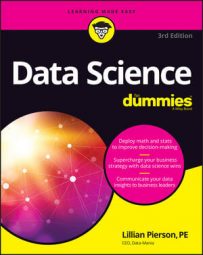Following clear and specific best practices in data visualization design can help you develop visualizations that communicate in a way that's highly relevant and valuable to the stakeholders for whom you're working. The following is a brief summary of some of the more important best practices in data visualization design.
-
Know thy audience: Since data visualizations are designed for a whole spectrum of different audiences, different purposes, and different skill levels, the first step to designing a great data visualization is to know your audience. Since each audience will be comprised of a unique class of consumers, each with their unique data visualization needs, it's essential to clarify exactly for whom you're designing.
-
Choose appropriate design styles: After considering your audience, choosing the most appropriate design style is also critical. If your goal is to entice your audience into taking a deeper, more analytical dive into the visualization, then use a design style that induces a calculating and exacting response in its viewers. If you want your data visualization to fuel your audience's passion, use an emotionally compelling design style instead.
-
Choose smart data graphic types: Lastly, make sure to pick graphic types that dramatically display the data trends you're seeking to reveal. You can display the same data trend in many ways, but some methods deliver a visual message more effectively than others. Pick the graphic type that most directly delivers a clear, comprehensive visual message.
Looking at your coding toolset
D3.js is the perfect programming language for building dynamic interactive web-based visualizations. If you're already a web programmer, or if you don't mind taking the time required to get up to speed in the basics of HTML, CSS, and JavaScript, then it's a no-brainer: Using D3.js to design interactive web-based data visualizations is sure to be the perfect solution to many of your visualization problems.Working with web-based applications
If you don't have the time or energy to get into coding up your own custom-made data visualization, fear not — there are some amazing online applications available to help you get the job done in no time. The following list details some excellent alternatives.-
Watson Analytics: Watson Analytics is the first full-scale data science and analytics solution that's been made available as a 100% cloud-based offering. Watson Analytics was built for the purpose of democratizing the power of data science. It's a platform where users of all skill levels can go to access, refine, discover, visualize, report, and collaborate on data-driven insights.
-
CartoDB: For non-programmers or non-cartographers, CartoDB is about the most powerful map-making solution that's available online. It's used for digital visual communications by people from all sorts of industries — including information services, software engineering, media and entertainment, and urban development.
-
Piktochart: The Piktochart web application provides an easy-to-use interface for creating beautiful infographics. The application offers a very large selection of attractive, professionally-designed templates. With Piktochart, you can make either static or dynamic infographics.
Going with analytics dashboards
When the word "dashboard" comes up, many people associate it with old-fashioned business intelligence solutions. This association is faulty. A dashboard is just another way of using visualization methods to communicate data insights.While it's true that you can use a dashboard to communicate findings that are generated from business intelligence, you can also use them to communicate and deliver valuable insights that are derived from business-centric data science. Just because dashboards have been around awhile, they shouldn't be disregarded as effective tools for communicating valuable data insights.
Leveraging Geographic Information Systems (GIS) software
Geographic information systems (GIS) is another understated resource in data science. When you need to discover and quantify location-based trends in your dataset, GIS is the perfect solution for the job. Maps are one form of spatial data visualization that you can generate using GIS, but GIS software is also good for more advanced forms of analysis and visualization. The two most popular GIS solutions are detailed below.-
ArcGIS for Desktop: Proprietary ArcGIS for Desktop is the most widely used map-making application.
-
QGIS: If you don't have the money to invest in ArcGIS for Desktop, you can use open-source QGIS to accomplish most of the same goals for free.

